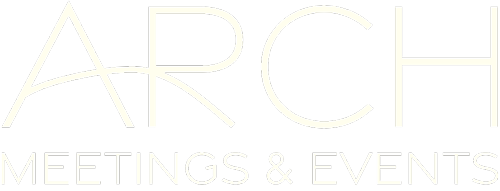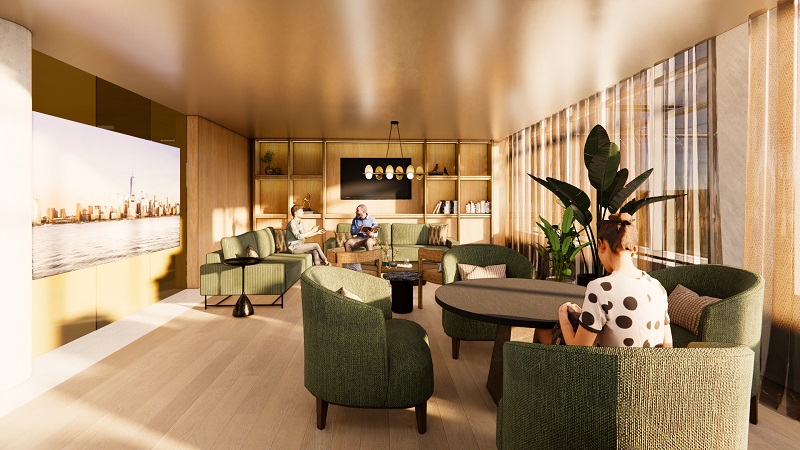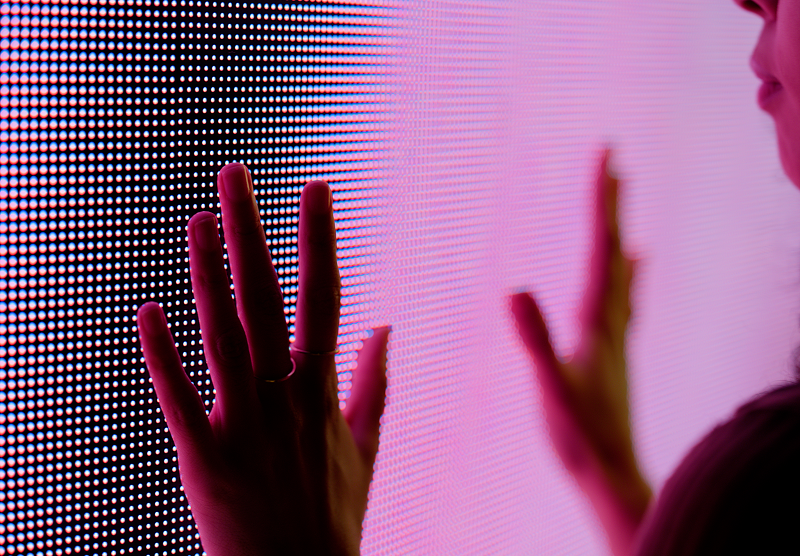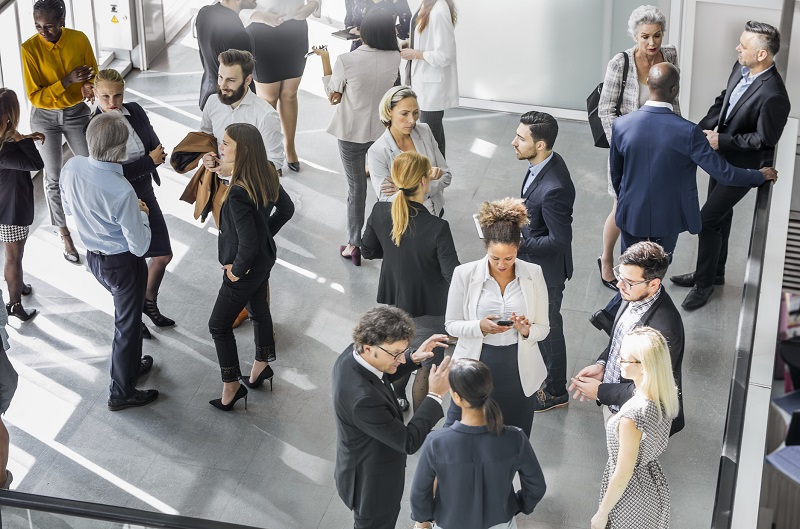Event design trends in 2025 are redefining how modern meetings and unforgettable experiences take shape. Successful meeting and event planners know that event design is no longer just about aesthetics, it’s about using trends and strategy to craft meaningful and memorable moments.
In fact, Freeman reports that 64 percent of attendees think immersive experiences are the most important element of an event. From lighting trends that guide mood to flexible layouts that encourage movement and storytelling, following the latest event design trends helps planners deliver experiences that not only feel intentional but also build stronger brands, grow loyal audiences, and prove their value with clear returns.
Why Event Design Matters
As attendee expectations evolve, strategic event design has become a differentiator for organizations. Spatial planning, intentional ambiance, and immersive technologies now shape engagement, satisfaction, and long-term loyalty in ways that directly impact business outcomes.
Planners who don’t embrace fresh and innovative design trends risk losing attendee interest, falling short on loyalty, and trailing behind in an increasingly competitive market. Bizzabo’s 2025 State of Events and Industry Benchmarks found that 78 percent of event organizers identify in-person events as their organization’s most impactful marketing channel, highlighting how design choices influence results.
By integrating adaptable spaces, sustainable offerings, and inclusive features, planners are crafting experiences that stand out, reinforcing their brands, and delivering measurable ROI, solidifying thoughtful event design and trend incorporation as an essential part of modern meeting strategy.
Top Event Design Trends Shaping 2025
Layered, Purposeful Lighting Design
Lighting has always been a cornerstone of event design, but in 2025 it’s being used more strategically than ever. Meeting and event planners are moving beyond simple illumination to create layered, purposeful lighting that enhances ambiance, defines zones, and guides attendees through a space.
Dynamic elements like color washes, accent lighting, and projection mapping allow event designers to tell a story, highlight key areas, and influence energy throughout the event. Thoughtful lighting not only supports event aesthetics but also contributes to accessibility, helping attendees navigate spaces safely, see key information clearly, and engage comfortably regardless of sensory or visual needs.
By incorporating adaptable, programmable lighting that shifts in real time, event planners can transform the environment and create captivating, memorable moments.
Flexible and Adaptive Event Spaces
Meeting and event venues are becoming more versatile than ever. Planners are seeking multi-functional areas that can easily transition between sessions, networking, and social activities. Modular furniture, movable partitions, and hybrid-ready setups allow events to accommodate changing group sizes and formats seamlessly.
This flexibility supports both in-person and virtual participation, ensuring every attendee can engage fully, regardless of location. Thoughtful space planning also encourages interaction, guides flow naturally, and provides zones for collaboration, presentation, and relaxation.
By embracing adaptable spaces, planners can create events that are both functional and dynamic, responding to attendee needs while maintaining a cohesive, well-designed experience.
Immersive and Experiential Event Technology
Technology is transforming how attendees engage before, during, and even after events, and in 2025, immersive and experiential tech is at the forefront of event design.
From touchscreen displays that let attendees explore schedules, maps, and exhibitor informationto AR/VR experiences for virtual walkthroughs, product demos, or gamified networking, planners are creating environments that respond to participant interactions and elevate storytelling. Innovative installations like interactive LED walls add dynamic visual interest and encourage engagement in physical spaces.
Integrating technology with design also helps accommodate hybrid audiences, ensuring that both in-person and virtual participants feel connected.
Planners can explore practical tips on creating immersive event experiences to combine technology, sensory elements, and interactive design for memorable events.
Sustainable and Biophilic Event Design
Sustainability is no longer optional in event design. Planners in 2025 are prioritizing eco-friendly event practices and biophilic elements to create healthier, more responsible events.
Incorporating recycled or renewable materials, energy-efficient lighting, and zero-waste strategies reduces environmental impact while enhancing attendee perception of the brand. Biophilic design such as natural light, indoor plants, and living walls foster a calming, restorative atmosphere that supports focus and well-being.
Thoughtful integration of sustainable elements also appeals to socially conscious attendees and aligns with corporate responsibility goals, making sustainable event ideas a key consideration for modern event planning.
Personalization and Inclusive Event Experiences
Personalization and inclusivity are continuing to emerge as defining trends in event design. Attendees now expect tailored experiences, from AI-driven session recommendations and custom agendas to interactive content that adapts to individual interests.
Inclusivity is also becoming a standard design principle, with events increasingly incorporating accessibility features, diverse speaker representation, and culturally thoughtful programming from the outset. These trends reflect a broader shift toward using data and insights to shape experiences, ensuring every attendee can engage meaningfully.
Planners can expect personalization in meetings and events to continue shaping how modern, inclusive events are designed and delivered.
Sensory and Experiential Event Enhancements
Event planners in 2025 are increasingly designing experiences that engage multiple senses, moving beyond visual and auditory elements to create truly memorable moments. Soundscapes, curated scents, tactile installations, and interactive tasting experiences are being incorporated to immerse attendees within the event environment and heighten emotional impact.
At wellness summits, soft instrumental music paired with the subtle scent of essential oils can guide attendees into a state of calm and focus, enhancing mindfulness sessions. At corporate offsites, tasting menus featuring local chefs and ingredients combine flavors, aromas, and narrative elements to craft an entire sensory journey.
These elements can help reinforce messaging, guide attendee behavior, and foster deeper connections with both content and brand. By thoughtfully layering sensory experiences, planners can make events feel more dynamic, memorable, and engaging, ensuring that participants leave with a lasting impression of the experience.
The Future of Event Design Trends
As event design continues to evolve, planners who embrace the latest event design trends are creating moments that resonate, engage, and leave a lasting impact. Thoughtful integration of elements like strategic layouts, intentional ambiance, immersive technology, sustainability, personalization, and multi-sensory experiences allow organizers to strengthen brand perception, foster attendee loyalty, and deliver measurable results.
By staying ahead of these trends, event professionals can ensure their meetings and experiences are not only memorable but also meaningful, setting a new standard for what modern events can achieve.
If you’re looking for event planning support, every Arch Meetings & Events venue features an on-site coordinator that has their finger on the pulse of emerging event trends, and can help you design and execute events that are both innovative and memorable. Get connected today.





